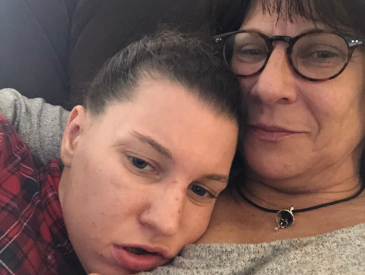Out-of-Home Placement
No matter what the circumstances, the prospect of placing your child in a living situation outside of the family home can be daunting and upsetting. But there are many reasons to consider out-of-home placement. Investigating and, if appropriate, choosing out-of-home placement is a journey. Preparing yourself with an understanding of your goals for your child and family, and the options available to you, is a good first step toward the best possible outcome for the entire family.

Your Team:
A mental health professional who uses therapy and other strategies to support coping and adjustment and treat concerns regarding social, emotional, or behavioral functioning.
A trained professional who works with people, groups and communities to help them better their lives.
A member of the clergy who is responsible for the religious needs of an organization and/or its constituents.
An individual who leads and/or guides individuals or groups coping with life experience and challenges.
A lawyer.
A social service professional who works with families to provide education, support, and mediation.
A psychologist, social worker, chaplain and/or spiritual leader can provide a space for talking through emotions and concerns. A social worker can connect you to resources and services available in your community and advise you on the practical and logistical steps necessary as you explore your options. An attorney or family advocate can help you navigate the policies and procedures around financing, including setting up a special needs trust.
In addition to your child’s needs, you may need to consider your needs and those of other family members. Changes in family circumstances (e.g., parental separation or divorce, birth, death, empty nesting, health issues) may prompt consideration. You may worry about who will care for your child when you are aged or deceased. This may be especially true if your child’s disease trajectory is relatively long, and they are expected to reach adolescence or adulthood.
Out-of-home placement may also allow you time to tend to yourself, your other children, and your partner in ways that might not otherwise be possible. And you may discover that your child would enjoy the opportunity to engage with new people and to have new experiences.
As you explore out-of-home placement, a wide range of feelings and emotions may arise. Anticipating and naming them can be a helpful coping tool. The life that you expected to have with your child is changing again. It is common to experience sadness, grief and anger at the situation. You may feel disappointment or guilt at not being able to keep your child at home. You may feel anxiety about handing over responsibility for your child’s care. You may worry that no one can care for your child as well as you can. And along with missing your child, making this decision may be an acknowledgement that your child’s condition is advancing.
At the same time, it is not uncommon to feel a sense of relief and peace.
“There is a lot of pressure on parents to provide home care. I don’t think using a residence is a decision that anyone would take lightly … But eventually I realized that there are some advantages, and as a mom I felt it was my responsibility to weigh the situation for all the family.“
– June, parent of Katie
Finding the Right Placement for Your Child
As you explore the options, remember that it may take time to find a good fit. Depending on your child’s needs, you may discover just the right setting in your own community, or you may have to find care in another location. Seek guidance but trust your instincts as a parent. It is important that you find a setting that meets your child’s needs, as well as your need to communicate and work with the staff and treatment team in a way that feels comfortable to you.


